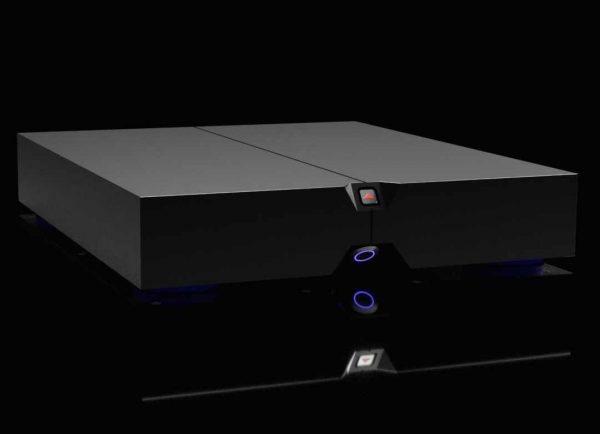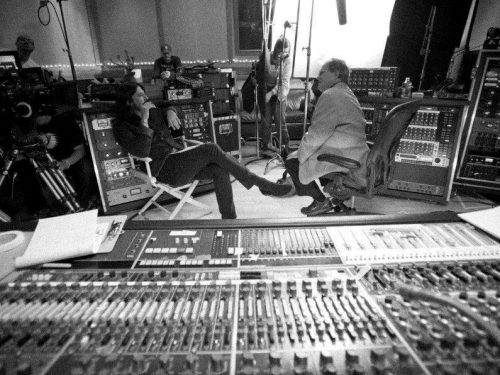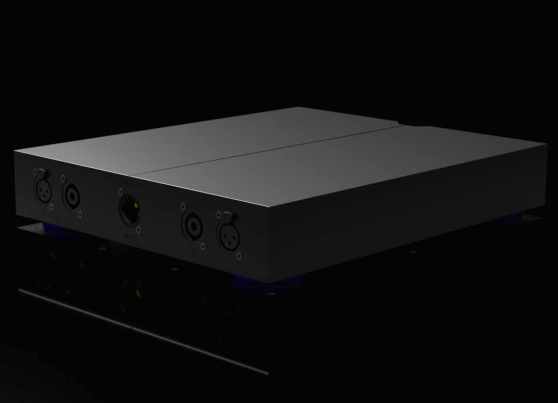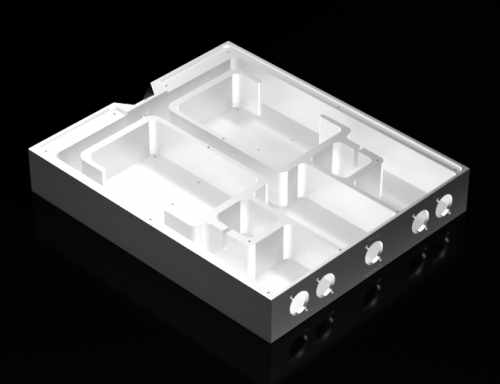
VP250 Dual Mono High End Design Amplifier Ncore 250 based.
€3,995.00
The best
This article about the new VP250 will not be enjoyed by many people. Villa ProCtrl, manufacturer of this power amplifier, has its own opinion which do not make audiophiles sleep peacefully. The VP250 amplifier has been designed by Villa ProCtrl specially for external beauty combined with the “best” amplifier. The advantage is that there is no arguing about matters of taste. Whether you like it or not. The VP250 is practically designed on the inside. The whole is made out of a block of aluminum. The base of the amplifier is a Hypex Ncore250. Left and right channel signal paths are completely separated, a Dual Mono Construction. The specifications of this Ncore250 are defined further down this page.
The reason
More than 25 years ago I sat next to Jan Peter van Amerongen, director and founder of Hypex Electronics B.V. He was my colleague and we often spoke about sound. One day, Jan Peter told me that during his traineeship he studied Crown/Amcron amplifiers. He told me: “Luut, I intend to improve this amplifier”. I would say he succeeded very well. In the nineties I worked at a metal company and supplied Hypex metal plates for the first series amplifiers. At home I listened to UCD class D amplifiers. My business partner and chief designer of the new VP250 also listens to Hypex amplifiers.
You want to hear how the recording was made originally
In 2018 Villa ProCtrl builds a design power amplifier with Ncore 250 by Hypex. I have a very simple opinion. From early childhood, I have worked in the world of sound. As a DJ, hi-fi seller, sound engineer in recording studios, radio studios and live performance applications, I have seen it all. An amplifier has only one purpose: to increase the output signal around 775mV at 0dB of a CD player, mixing console, TV device etc., which is too weak to power stereo speakers, without adding anything. Increasing can be a few Watts to thousands of Watts depending on the speakers. An amplifier for a clock radio or a large PA installation differs basically only in the amount of power (wattage), I will disregard all additional technical differences. An amplifier must provide plenty of power to let the loudspeaker do its job and that is simply increasing the original signal without making any changes. Yes, I know that an adequate list of technical specifications is needed to achieve this. And that, is to my opinion whate a Ncore does. Many critic about Ncore and Class D in general complains that these amplifiers sound cold or analytic. I dare say that you hear how the recording sounds through your speakers. Either the recording or the speakers can cause this, not the Ncore amplifier. If you are used to a warm sound, it is because the amplifier adds timbre which makes the recording sound warmer through the speakers.
Why does every amplifier sound different? It is quite easy to design an amplifier with a bit knowledge. Even an amplifier that delivers 1000 W is not hard to make. Making an amplifier that sounds “good” is difficult. Less expensive amplifiers that provide high output power are technically not bad. These are designed and manufactured simple on technical results at the lowest possible cost. The amp is not tested on sound. Manufacturers of the prominent brands and thus the more expensive amplifiers all sound different.That sound is a considered choice of that brand. The components are selected with care to obtain the right timbre.
I dare say that many recording are from a low quality. Every speaker sounds different. When you believe a warm sound sounds better, I respect your opinion. Personally I choose for a neutral Ncore amplifier connected to a set of speakers that let me hear the recording as honestly as possible. I would like to hear all the details in the recording, the location of the instrument, and I want to spot the voices perfectly. To hear the depth in the sound, the timbre. I want to experience the intention of the producer with the recording. I cannot deny that I like working in analogue recording studios. And yes, in doing so, we add warmth to a sound or not. Everything is permitted in the studio as long as something beautiful is produced. I love to hear recordings made in Sound City or the work of producer Trevor Horn.

I love mixing on an analogue Tascam mixer from the eighties or on the large American Euphonix mixer. But I want to hear, through the speaker monitors, what comes out the mixer without colouring it unintentionally. At home I want to experience the sound from the recording studio. I am not talking about the same tone, as this is not possible, the acoustics at home is different from the acoustics in the studio. But the definition of the sound must be the same.


HD VP250S Black-Ncore Hypex amplifier
Pure no nonsense
For us the choice for Ncore was clear. We wanted to design an amplifier that looks good and is built at top level with the best components. The casework is entirely milled out of a block of aluminum. On the front is a vandalism proof switch (because of the life span) that silently switches the amplifier on and off. On the back is a Neutrik PowerCon for power supply, a robust and reliable locking connector. The input signal is connected via balanced XLR connectors. It was a conscious decision not to have a Cinch socket. In the studio you work with balanced XLR. No hassle with interference problems and a fixed connection.
The input of the VP250 goes after the XLR’s directly to a galvanic separation via a transformer. Often the inputs are only decoupled by a condenser.
Why decouple the input?
The amplifier input just wants to see an AC signal, so no DC. If the signal offered on the input contains DC offset, this comes out in multiples on the amplifier output equal to the gain. Result is that the treble loudspeaker will break, however, in practice this is prevented by the capacitor in the high-pass filter. The woofer unit with the offered DC voltage, on the other hand, is completely in balance. The inputs of an amplifier are normally decoupled by a capacitor. This is less expensive than a transformer but has the disadvantage that this affects the tone negatively, the characteristic is certainly not straight.
A solution with a transformer is much flatter. We used to see this application on all inputs of expensive studio mixers. Just look at the legendary Neve mixing consoles by Rupert Neve.
Because we go for the best in the VP250, we have chosen for high-quality input transformers, created specially for this amplifier. The output signal is sent to the speakers via Neutrik speakON, a professional PA and studio solution as well. Cabling is included in the set. One Neutrik PowerCon 1.5 meters power cord. Two Neutrik XLR to XLR for the input signal (choose the length yourself, maximum length 5 meters). Two Neutrik speakON to Spades speaker cables or open ends (choose yourself, maximum length 1o meters per cable. You purchase this amplifier because you dare to choose for taste and want really to listen.
Ncore® is the first Class-D amplifier not just to nudge the best linear amplifiers, but to surpass them in every aspect relevant to sound quality. If you want the ultimate in clarity, resolution and musicality, there is no longer a reason to trade efficiency or compactness. Ncore technology combines the stability of UcD with improved load-independence, lower distortion and lower output impedance.
Introduction
The NC250MP amplifier module incorporates a low power standby power supply (meets 2013 ERP Lot 6 0.5W requirements), a highly efficient switch mode power supply and a high-performance Class D amplifier in one compact and easily applicable power brick.
The amplifier used in the NC250MP is a self-contained high-performance class D amplifier intended for a wide range of audio applications, ranging from public address systems to ultrahigh-fidelity replay systems for studio and home use. Chief distinguishing features are flat frequency response irrespective of load impedance, nearly frequency independent distortion behaviour and very low radiated and conducted EMI. Control is based on a phase shift controlled self-oscillating loop taking feedback only at the speaker output.
The main SMPS providing the power for the amplifier is a compact, high power, highly efficient, regulated half bridge converter with synchronous rectification on the main output rails. These properties make this technology ideal for powering Class D audio amplifiers.
For applications requiring a standby mode, a low power standby SMPS also has been integrated into this product. To achieve universal mains input compatibility this SMPS features an automatic input voltage doubler.
The Hypex Channel Extension connector provides for an additional low power tweeter amplifier channel.
Applications:
Monitor loudspeakers for recording and mastering studios
Audiophile power amplifiers for professional and consumer use
Highlights:
High efficiency
Universal mains operation
Flat, fully load-independent frequency response
Low output impedance
Very low, frequency-independent THD
Very low noise
General Features:
Two (Dual Mono) channel amplifier
5W standby SMPS per channel
Advanced over current protection
External controlled operation
Auto-switching (115/230V)
| Ncore Amplifier Specifications | NC250 | |||||||||||||||||||||
| Parameter | Conditions | Symbol | Min | Typ | Max | Unit | Note | |||||||||||||||
| Peak Output Power | 1kHz, THD=1%, All Chanels driven. Per channel.
|
|
|
|
|
|||||||||||||||||
| Continuous Output Power | Per Channel, 25°C ambient temperature | PR, cont |
– |
50 |
– |
W |
1] | |||||||||||||||
| Distortion | <10Hz-20kHz AES17 Pout<PR/2 | THD+N |
– |
0.0015 |
0.00024 |
% |
2] |
|||||||||||||||
| <10Hz-20kHz AES17 Pout=1W |
|
– |
– |
0.0015 |
2] | |||||||||||||||||
| CMRR |
– |
71 |
– |
dB |
||||||||||||||||||
| Signal-to-Noise Ratio | <10Hz-20kHz AES17 |
|
121 |
– |
dB |
|
||||||||||||||||
| Output Nois | Unwtd,<10Hz-20kHz AES17, 0Ω termination | UN |
– |
– |
30µ |
V |
|
|||||||||||||||
| Output Impedance | f<1kHz | Zout |
– |
– |
1.5 |
mΩ |
|
|||||||||||||||
| f<20kHz |
– |
– |
3.5 |
mΩ |
|
|||||||||||||||||
| Power Bandwith | PBW |
|
20-35k |
|
Hz |
|
||||||||||||||||
| FrequencyResponce | ±0/-3dB. All loads |
10 |
– |
50k |
Hz |
|
||||||||||||||||
| Voltage Gain | AV |
25 |
25.5 |
26 |
db |
|
||||||||||||||||
| Effiency | Full Power | η |
|
92 |
– |
% |
|
|||||||||||||||
| Idle Losses | Per channel | PO |
– |
3.5 |
|
W |
|
|||||||||||||||
| Current Limit per CH | Hiccup after limiting 40ms |
– |
17.5 |
– |
A |
|
